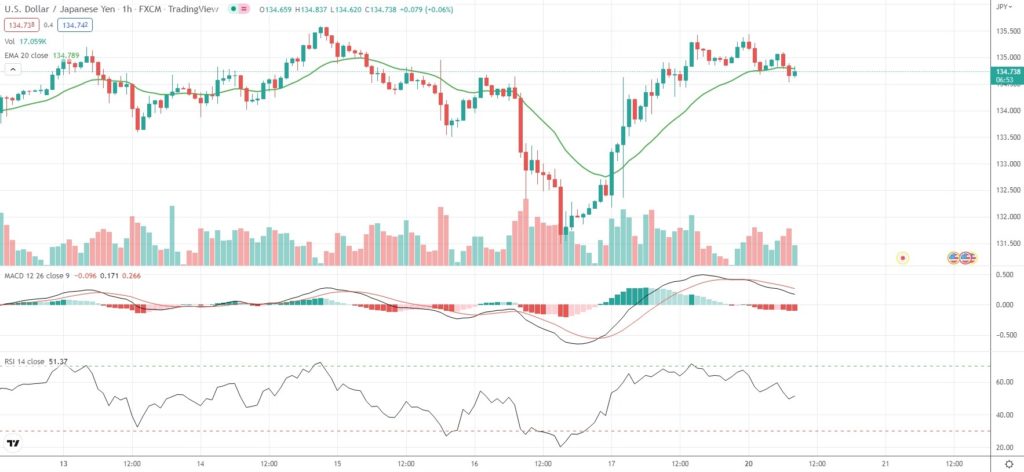USD/JPY traded not far from last week’s 23 1/2-year high of 135.59 on Monday, as central bank monetary policy divergence between Japan and the United States became more evident.
In light of last week’s massive monetary policy tightening by central banks, including the Federal Reserve, Bank of England and even the Swiss National Bank, Bank of Japan once again underscored its commitment to ultra-accommodative policy.
At its two-day policy meeting that was concluded last Friday, Bank of Japan kept the -0.10% target for short-term interest rates and stuck to its guidance to maintain borrowing costs at “present or low” levels.
The central bank also pledged to defend its cap on 10-year Japanese government bond yields through unlimited buying. The BoJ aims to keep benchmark 10-year yields within 0.25% of its 0% target.
“Raising interest rates or tightening monetary policy now would add further downward pressure on an economy that is in the midst of recovering from the COVID-19 pandemic’s pain,” BoJ Governor Haruhiko Kuroda said at a conference last week.
Kuroda also noted the central bank would not tolerate an increase in 10-year yields above the 0.25% cap and that there was no plan to raise the upper limit despite rising global yields.
“The market was gearing up for a BOJ capitulation (but) got exactly the opposite,” National Australia Bank senior foreign-exchange strategist Rodrigo Catril wrote in an investor note.
On the other hand, the Federal Reserve’s message it will continue fighting inflation aggressively “could not be clearer,” and as a result, the US Dollar has “regained its mojo,” Catril added.
The Fed raised the target range for the federal funds rate by 0.75% last Wednesday, which has been the largest single-meeting increase since 1994.
As of 8:52 GMT on Monday USD/JPY was inching down 0.08% to trade at 134.741. Last week the major Forex pair climbed as high as 135.590, which has been its strongest level since October 5th 1998 (136.06).
USD/JPY has risen 4.76% so far in June, following a 0.96% drop in May.
Daily Pivot Levels (traditional method of calculation)
Central Pivot – 134.14
R1 – 136.13
R2 – 137.41
R3 – 139.40
R4 – 141.39
S1 – 132.87
S2 – 130.88
S3 – 129.60
S4 – 128.32






